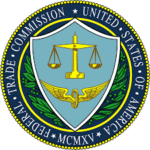
Unsealed Lawsuit Exposes Amazon’s Alleged Monopolistic Practices and Sparks Debates on Fair Competition

In September, the FTC and 17 States announced they were suing Amazon for illegal monopolist practices.
Now, the Federal Trade Commission (FTC) has unsealed this lawsuit against Amazon, providing new details into the allegations it levied against the tech giant and its business practices.
“Amazon is a monopolist. It exploits its monopolies in ways that enrich Amazon but harm its customers: both the tens of millions of American households who regularly shop on Amazon’s online superstore and the hundreds of thousands of businesses who rely on Amazon to reach them.”
– From the Unsealed FTC and 17 State Lawsuit
The alleged Amazon actions outlined by the FTC and 17 States underscore the broader debate about the balance between market dominance and fair competition, particularly in the digital retail arena.
What the FTC and 17 States Claim:
Prime Strategy and Alleged Monopoly: Balancing Control and Consumer Choice
Central to the allegations is Amazon’s Prime subscription package, a comprehensive offering that has been accused of stifling fair competition in the market.
According to the unsealed lawsuit, Amazon contemplated breaking down its Prime subscription in 2021, allowing customers to opt for individual services. However, the company purportedly shelved this idea, despite recognizing customer interest, fearing it would compromise its dominance in the online superstore sphere.
The lawsuit contends that Amazon deliberately pursued an all-encompassing Prime strategy, refusing to offer more choices to consumers, a move that the lawsuit argues would foster competition and potentially lower prices.
Project Nessie: Alleged $1 Billion+ Algorithmic Influence on Pricing
The FTC’s unredacted complaint reveals accusations regarding Amazon’s secretive algorithm, “Project Nessie”, allegedly employed to boost profits and control market prices. Per the lawsuit: “Amazon has implemented an algorithm for the express purpose of deterring other online stores from offering lower prices.”
The unsealed portions of the complaint detail how Amazon utilized this algorithm to hike prices for certain goods and influence other online platforms to follow suit to allegedly make Amazon more than $1 billion in excess profits. Project Nessie identified products where competitors attempted to match Amazon’s prices. When activated, the algorithm systematically raised prices for these goods, maintaining the elevated prices even after other platforms adjusted theirs. The lawsuit contends that Amazon strategically toggled this algorithm, deactivating it during periods of external scrutiny and reactivating it when out of the public eye.
Allegations further claim that amid declining consumer spending and rising inflation, high-ranking Amazon executives contemplated reactivating Nessie to bolster retail profits. Doug Herrington, CEO of worldwide Amazon stores, purportedly inquired about reactivating Nessie with updated targeting logic.
Dark Patterns: Tricking Consumers with Manipulative Design
The unredacted lawsuit highlights Amazon’s alleged use of manipulative design techniques, making it challenging for customers to opt out of standalone subscriptions. Notably, certain proprietary data about Prime’s subscribership remains undisclosed in the complaint due to its sensitivity.
Per the lawsuit: “For Amazon, signing up and maintaining as many Prime subscribers as possible is a top priority. In service of this goal, Amazon has even knowingly tricked shoppers into signing up for Prime and actively thwarted their efforts to cancel their subscriptions. Amazon internally admits to using “misleading designs” for its user interfaces “to mislead or trick users to make them do something they didn’t want to do, like signing up for a recurring bill, favoring shareholder value over user value.” At multiple points, Amazon considered changing flaws in its signup process that led to what it knew were “mistaken signups,” but chose not to correct those issues and instead continued to trick more users into signing up for Prime. In addition to its “misleading” signup process, Amazon constructed a cancellation process so lengthy, arduous, and complex that it was internally codenamed the “Iliad Flow,” after Homer’s 15,693-line epic poem. “
Advertisements and Coercive Practices: Market Control Tactics
Additional revelations from the unredacted portions of the lawsuit shed light on Amazon’s advertising strategies. Per the lawsuit: “Amazon’s online storefront once prioritized relevant, organic search results. Following directions from its founder and then-CEO Jeff Bezos, Amazon shifted gears so that it now litters its storefront with pay-to-play advertisements.” The lawsuit accuses Amazon of intentionally accepting these low-quality or “defective” ads to boost advertising revenue.
Coercive Business Practices: Coercion of Sellers
The lawsuit also delves into Amazon’s alleged coercion of sellers into using its logistics network, known as Fulfillment by Amazon (FBA). The lawsuit claims Amazon suspended a program that allowed sellers to display a Prime badge without using FBA after learning about competitors’ alternative fulfillment services. The agency alleges that this suspension occurred despite participating sellers meeting delivery requirements set by Amazon.
Amazon is also accused of employing anticompetitive tactics, including penalizing sellers for offering lower prices elsewhere, coercing them into paying high fees for advertising and fulfillment services, and inundating its digital store with numerous ads, complicating customers’ efforts to find the best deals. Per the lawsuit: ‘Amazon has hiked so steeply the fees it charges sellers that it now reportedly takes close to half of every dollar from the typical seller that uses Amazon’s fulfillment service. Amazon recognizes that sellers find “that it has become more difficult over time to be profitable on Amazon” due to Amazon’s “increasing fees and costs.” But as one seller explains, “we have nowhere else to go and Amazon knows it.”’
Per the lawsuit, “One set of tactics (Amazon utilizes) stifles the ability of rivals to attract shoppers by offering lower prices. Amazon deploys a sophisticated surveillance network of web crawlers that constantly monitor the internet, searching for discounts that might threaten Amazon’s empire. When Amazon detects elsewhere online a product that is cheaper than a seller’s offer for the same product on Amazon, Amazon punishes that seller. It does so to prevent rivals from gaining business by offering shoppers or sellers lower prices.“
Disputing the Allegations

In response to these allegations, Amazon vehemently refutes the lawsuit’s portrayal of its Amazon Prime strategies, Project Nessie, advertising practices, use of dark patterns, and coercive seller strategies. Emphasizing the value of its Prime subscription, Amazon highlights consumer flexibility in accessing individual Prime benefits.
INSIDER TAKE
The unsealed lawsuit represents a critical point in the ongoing battle between regulators and tech giants, signaling a significant phase in defining antitrust laws in the digital age. The outcome of this legal battle could set precedent-setting implications, reshaping the tech industry’s regulatory landscape.
This case also challenges the balance between market control and consumer choice, sparking debates about fostering healthier competition. The implications extend beyond Amazon, potentially reshaping regulatory approaches and market dynamics across the tech industry. The accusations against Amazon underscore the ongoing struggle to define the boundaries of fair competition in the digital retail sphere.
The case’s outcome could herald significant changes in how tech companies operate, impacting market competition and consumer welfare with the implications extending beyond Amazon, potentially reshaping regulatory approaches and market dynamics across the tech industry.



